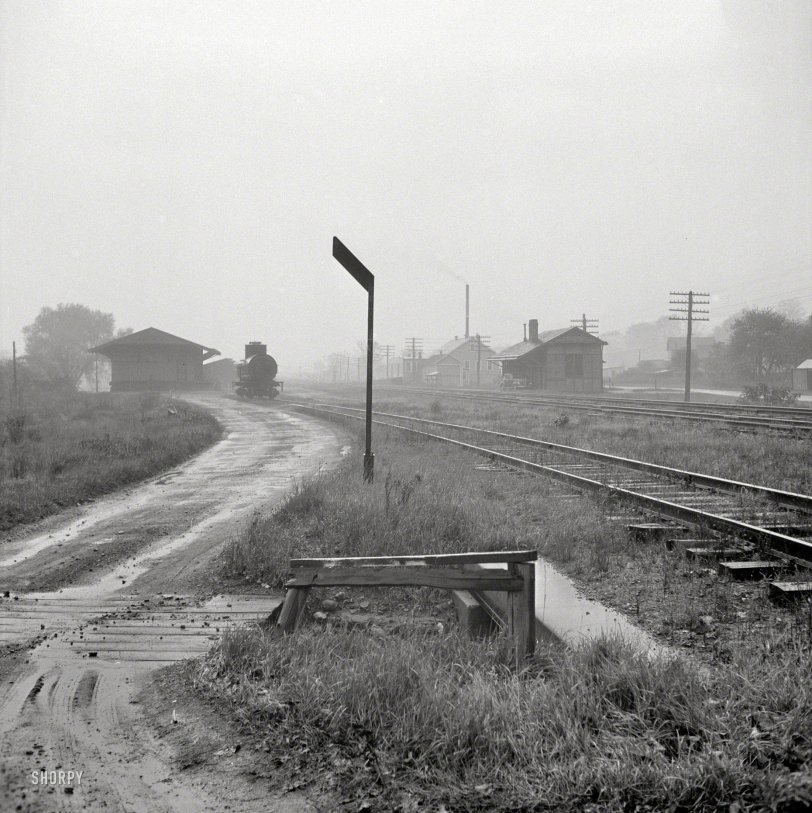


Framed or unframed, desk size to sofa size, printed by us in Arizona and Alabama since 2007. Explore now.
Shorpy is funded by you. Patreon contributors get an ad-free experience.
Learn more.

- Texas Flyer wanted
- Just a Year Too Soon
- WWII -- Replacing men with women at the railroad crossing.
- Yes, Icing
- You kids drive me nuts!
- NOT An Easy Job
- I wonder
- Just add window boxes
- Icing Platform?
- Indiana Harbor Belt abides
- Freezing haze
- Corrections (for those who care)
- C&NW at Nelson
- Fallen Flags
- A dangerous job made worse
- Water Stop
- Passenger trains have right of way over freights?
- Coal
- Never ceases to amaze me.
- Still chuggin' (in model form)
- Great shot
- Westerly Breeze
- For the men, a trapeze
- Tickled
- Sense of loneliness ...
- 2 cents
- Charm City
- What an Outrage
- Brighton Park
- Catenary Supports
Print Emporium
A Foggy Day: 1941

October 1941. "Freight and passenger station. Fort Hunter, New York." Continuing our jaunt Upstate, courtesy of John Collier. View full size.
Up in these parts, we called them a freight "house"
I see the agent is in evidenced by presence of his car.
He must get lonely working by himself.
Let's pay him a visit!
Flanger notes.
Most railroads used converted cabooses for their flanger cars. However, some companies utilized cars that looked not unlike a flatcar with two (for bi directional running) angled blades under the car. It took quite a man to operate the latter open air types in the dead of winter.
Transportation Hub
The first two versions of the Erie Canal, along with the West Shore railroad, passed directly through Fort Hunter and crossed Schoharie Creek with a succession of slackwater dam, stone aqueduct and steel truss bridge. All the railroad tracks are gone, but the roadbed remains as the Canalway bike and hiking path. Several original canal locks and other structures have been restored or preserved and there's a visitor center and historical markers to explain it all; see this.
The third and final version of the Erie Canal adapted the adjacent Mohawk River to its purposes. The modern Lock 12 and its associated river control dam are located at Fort Hunter.
Flanger sign
The post with the angled blade is a flanger sign, and evidence that we are upstate in serious snow country.
A flanger is a pair of plow blades that are lowered between the rails to clear snow that can build up and cause a derailment. It is either mounted beneath a snowplow or rotary snow blower, or under a separate dedicated car. The flanger must be raised at each switch and grade crossing to prevent severe damage, hence a signpost tall enough to show above a deep snowfall.
Flanger signs came in many forms. Sometimes there were several angled blades, apparently to describe the hazard, sometimes a signboard, either triangular or odd pretzel shaped.
























On Shorpy:
Today’s Top 5